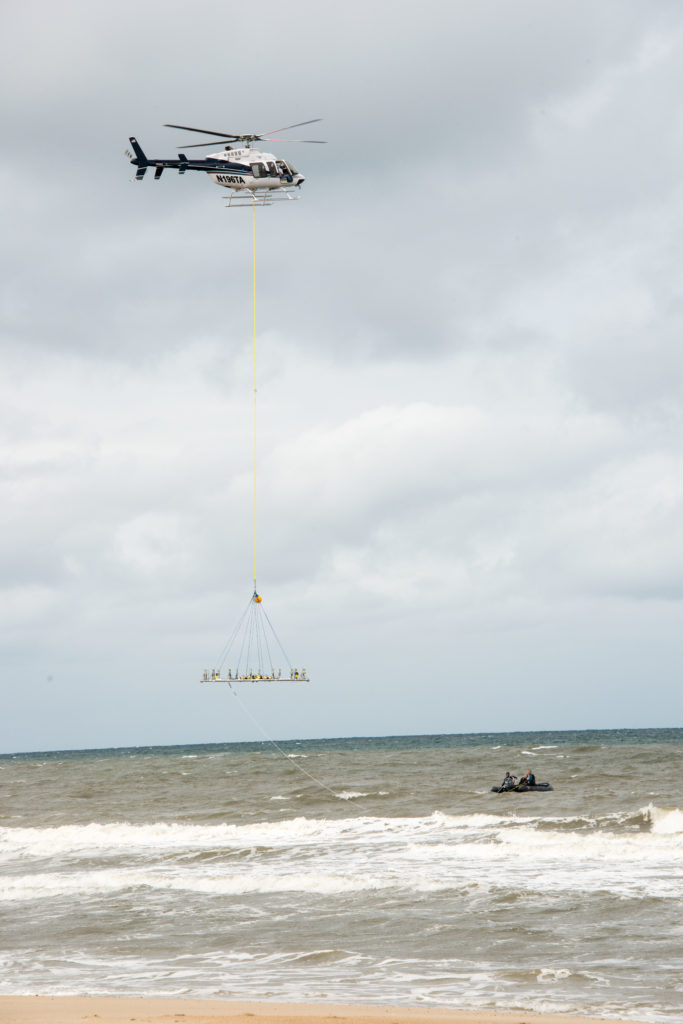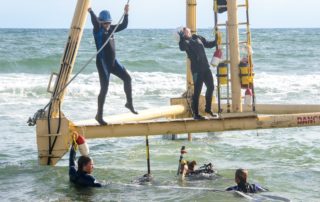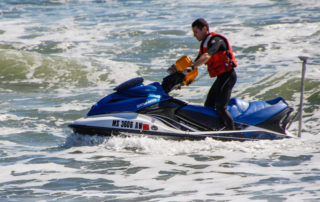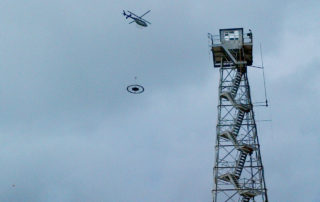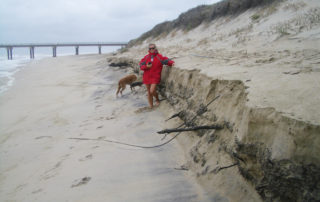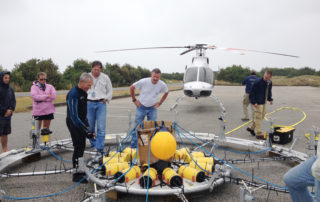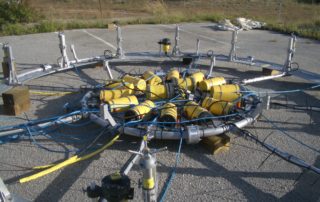Introduction
Beaches and the adjacent surfzone are threatened by terrestrial pollution that often drains onto the shoreline where it is transported and dispersed within the surfzone (region of breaking waves near the shoreline). Polluted water causes costly beach closures and endangers public health, but currently the surfzone dispersion rates required for such a model are not known.
Recent fieldwork has found surfzone tracer (e.g., pollution, nutrients, larvae) dispersion is correlated with the strength of horizontal eddies within the surfzone. Observations and model results indicate there is a wide range of surfzone eddy sizes and time scales, but the structure and origin of this rich vorticity field is unknown. We hypothesize that vorticity is generated at the ends of a breaking wave crest (crest ends), and a recent modeling study suggests that crest ends may be a primary forcing mechanism for surfzone eddy diffusion.
Analytical and numerical studies also suggest that alongshore advective acceleration may be important to surfzone dispersion, as well as to rip currents, alongshore flow meanders, and sediment transport. Recent numerical model simulations indicate that alongshore advective acceleration can be large relative to other terms in the depth- and time-averaged surfzone momentum balance. However, field measurements have shown that alongshore flows are predicted well with simplified equations that neglect advective accelerations. Furthermore, except near strong rip currents, field observations show relatively small alongshore variations in alongshore surfzone flows. We are using these field observations and model simulations to determine the magnitude and source of the advective term. Field evidence that the advective acceleration contributes significantly to the momentum balance may lead to new theories and models for shoreline change.
Science Objectives
We are using the unique circular array of current meters to make the first sea-swell (0.05-0.25 Hz) and lower frequency measurements of surfzone vertical vorticity (e.g., from horizontal eddies) over a range of incident wave conditions on a natural beach. Crest-end forced vorticity is being compared with other possible eddy forcing mechanisms, including wave groups and shear instabilities of the mean alongshore current (shear waves), over a range of conditions.
In addition, we are using the spatially dense observations of wave forcing, pressure gradients, and surfzone flows to estimate advective acceleration and to evaluate and calibrate a numerical model. The field-tested model will be used to explore the causes of the advective accelerations in the presence of alongshore inhomogeneous surfzone bathymetry.
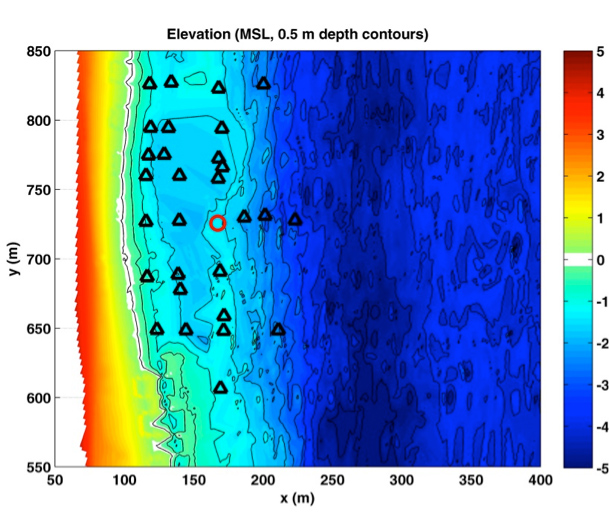
Color contours of bathymetry (scale on right in meters above MSL) and locations of co-located current meters and pressure gages (black triangles) and the circular current meter array (red circle) as a function of alongshore (y) and cross-shore (x) distance.
Field Experiment
We collected measurements of water levels, waves, and flows from September 26 until Oct 18, 2013. Offshore wave heights ranged from 0.2 to 4.5 m, mean (8.5-min averaged) offshore directed and alongshore currents reached 0.8 and 1.6 m/s, respectively. The bathymetry varied from near plane parallel contours, to strongly alongshore inhomogeneous.
Thanks to the WHOI field crew Levi Gorrell, Danik Forsman, Billy Wells, Kohl Brinkman, Regina Yopak, Ross Hill, Anna Wargula, and Melissa Moulton, the USACE Field Research Facility personnel, and our helicopter crew.
Download Data
Please fill out the below form to access data files.
For More Information
For more information please contact David Clark ( davidbclark@gmail.com ), Jeff Hansen ( jeff.hansen@uwa.edu.au ),
Steve Elgar ( elgar@whoi.edu ), or Britt Raubenheimer ( britt@whoi.edu )
Funded by NSF and ASD(R&E)
